Planes Of The Head By DraxtheSoviet


Planes of the head by DraxtheSoviet
More Posts from Aether1984 and Others

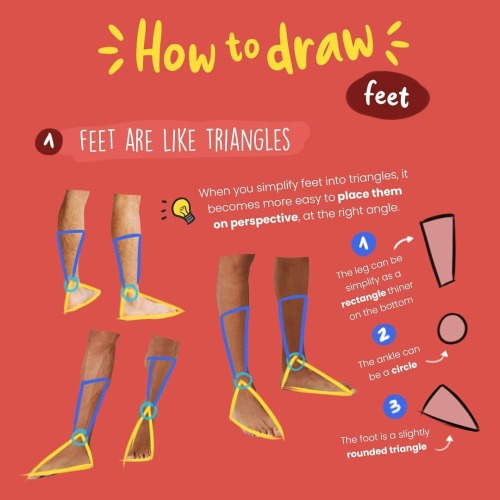
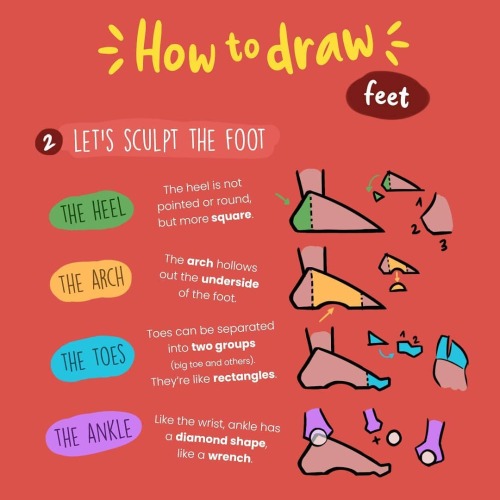



How to draw feet by zephy.fr
Support the artist and follow them on instagram!
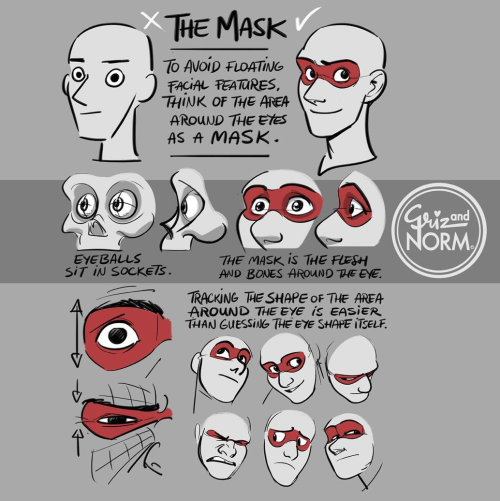
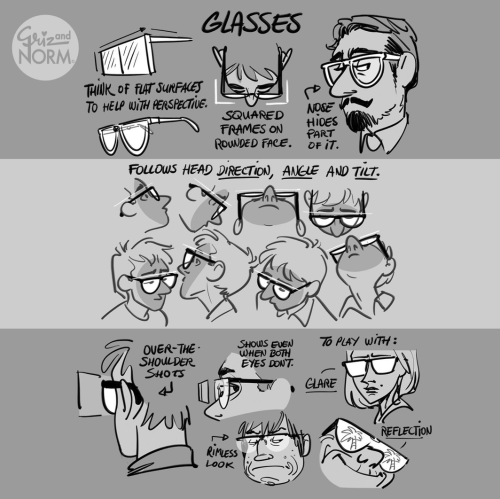
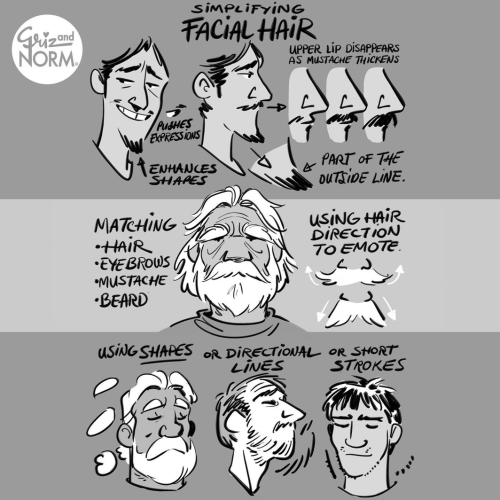

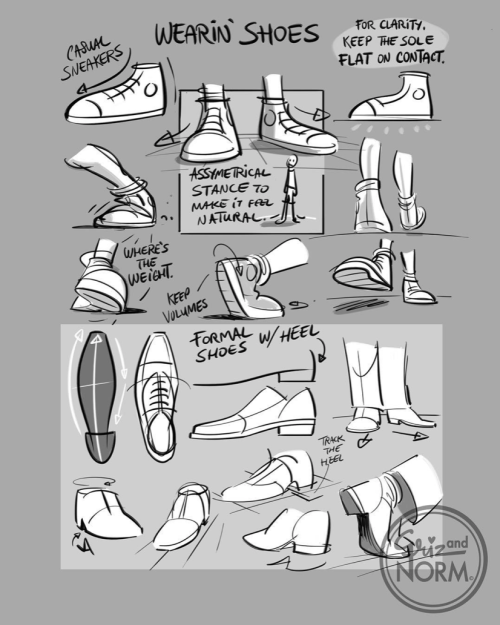
Drawing tips by Disney artists Griz and Norm Lemay
Can I get some tips for drawing heads facing upwards? The neck and chin always confuse me.
Yes! This is one of the hardest angles to get right, imo, because it’s such a rare position to find ourselves in. That, plus the foreshortening needed to get the face just right.
I’d start by doing some studies. Here, I traced over these stock photos to figure out where the contour lines of the jaw go, and the sculptural quality of the neck.
Then, I used the knowledge to draw a head freehand.

Some important notes:
The chin slopes into the neck with a pad of fat, muscle, and skin. Therefore, you shouldn’t follow the contour of the jaw. It shows as a “shelf”, as in you can see the shadow underneath. In people with more prominent fat, there will be less of a change in angle, and you will see less shadow under the jawbone.
Some people have a prominent adam’s apple that you can see on the track of the trachea.
The sternocleidomastoid muscle is important to show. It connects from just behind the ear to the clavicle. It is used in the turning of the head.
Another post by Wackart about neck anatomy: https://theredlinestation.tumblr.com/post/189113153780/can-you-explain-like-how-necks-work-and-how-to
-Mod Future (ko-fi)
If you don't mind me asking, how do you draw faces and heads in general?
HELLO YES IM SO SORRY I TOOK FOREVER. I’VE SORTA COVERED A LITTLE BIT OF THIS, SO I’LL LINK MY OTHER “TUTORIALS” AT THE END. HERE WE GO
SIDE PROFILE FACE AND HEAD:




FRONT PROFILE FACE AND HEAD:





MINI-TIPS:

Okay so I hope that helped!!! Obviously these vary based on the design, race, and age of your character, but it’s all rooted in the same basic,,, tHiNg.
Here’s the nose and eye tutorial (just skip the hands 😬):
https://rustic-space-fiddle.tumblr.com/post/181858381880/how-do-you-draw-hands-and-eyes-im-having-so
https://rustic-space-fiddle.tumblr.com/post/181887675515/how-do-you-make-noses-i-think-they-look-really










Masters of Anatomy
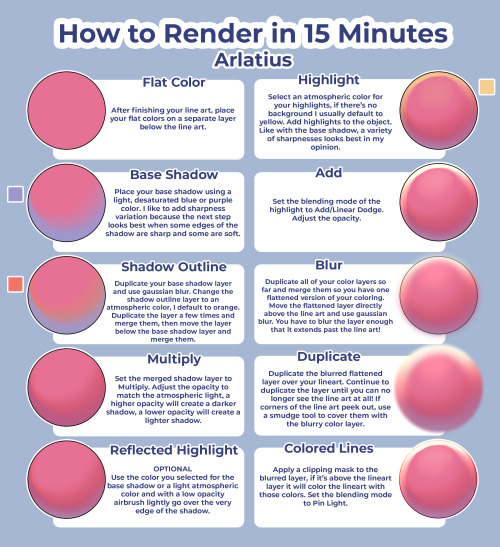
fast rendering tutorial for when you dont want to put in any effort
Horns and Antlers
took a while, but i'm mostly back on my feet and have energy again.
I received an ask a while ago about how to add horns and antlers onto a humanoid, so here are my thoughts on that:

(image description: a stock image of the human skull from four angles, front, back, side, and three quarters. Next to it, the same image faded and traced over in blue, with red circles all around the top front portion of the skull. A note on the image says, "there are lots of places you can anchor horns or antlers". end description.)
Here I have marked out some common placements for horns/antlers, and I will show them each in more detail below. The four main areas are: the brow, the center forehead, the top, and the sides of the skull.
As a general rule, horns and antler anchor directly to the skull, but they do not emerge from the skin as solid bone. There is typically a covering layer of some sort, like a keratin sheath, that starts where the horn or antler emerges from the skin. This makes horns and antlers look a bit funny when you remove the skin, because the actual bone base is thinner than the covering layer.




(Image description: same as before, with the four angles of the human skull next to traced versions of it. This time, each of the four images shows the skull with simple horns added and the skull altered to accommodate them in the four basic horn positions. Brow, sides, top, and center forehead. end description.)
Depending on the size of the horns or antlers, you may want to add more bone to the skull, or even thicken the neck bones. Bigger neck and shoulder muscles will also be important to keep the head upright with the additional weight. For horns at the brow and forehead, I've made the brow bone bigger, and for horns at the top and sides, I've made the skull a bit wider and thicker in those areas. It isn't a huge difference, and may not even be very visible on a skin layer, but it's important to be aware of.
And now I also have four sketches of how each horn/antler location would look on a person with the skin and hair in place.

(image description: four simple sketches of people from the shoulders up, in basic shaded colors. From the top left, clockwise:
A man with a mohawk and short beard, frowning. He has curved horns over his brow. A woman with long braided hair and a neutral expression. She has a single horn in the center of her forehead. A man with a beard and long unkempt hair, looking tired but happy. He has moose-like antlers on the sides of his head. An androgynous person with short hair, smiling. They have pronghorn antlers at the top of their head. end description.)
It's very easy on the sides and top of the head to cover the base of the horns/antlers by layering the hair around them. But any horns on the forehead area will be harder to cover this way. I've put thicker skin where the horns and antlers emerge, which has made the brow very heavy on the first two sketches. To balance that out, I also made their nose bridges a bit bigger and more connected to the forehead.
So I hope that helps! Horns and antlers are very fun, and they come in so many shapes.
How to draw a basic head construction
By REIQ
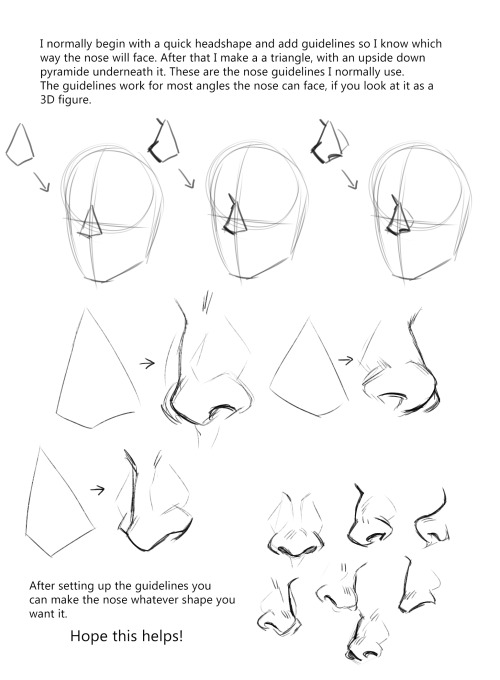
Some people requested a nose tutorial some time ago, and I finally got around to show you how I draw noses. There are a million ways on how to draw them, but this is atleast how I do it!

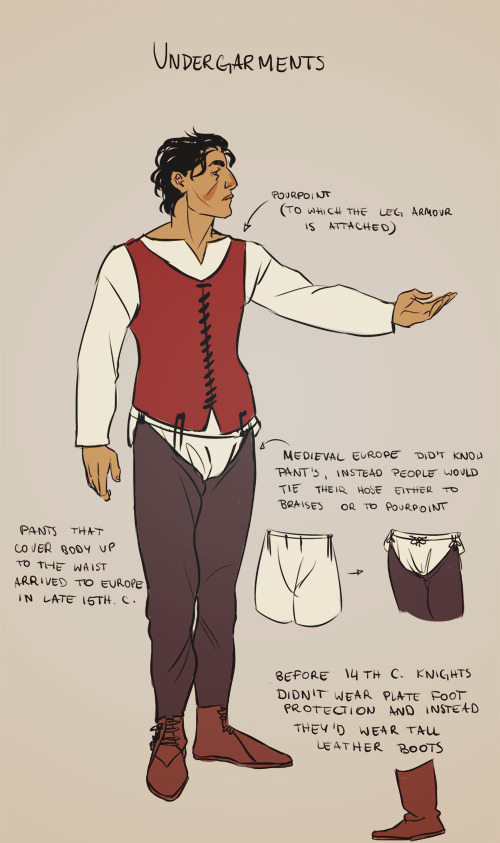
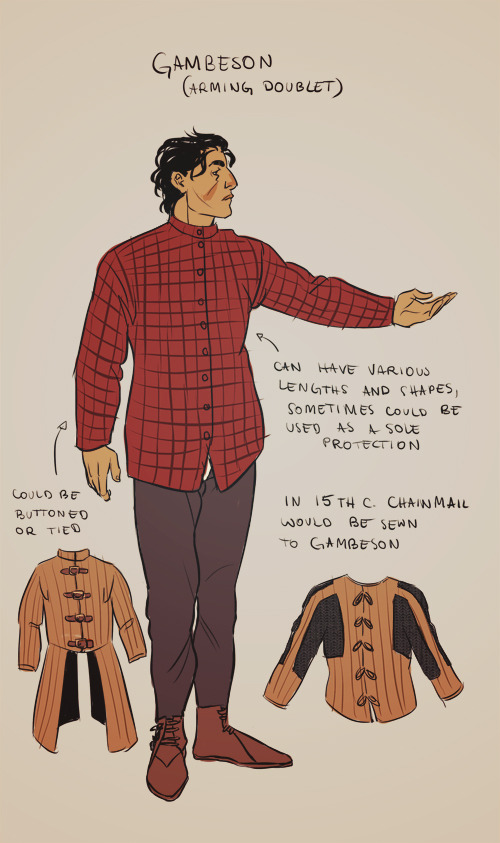
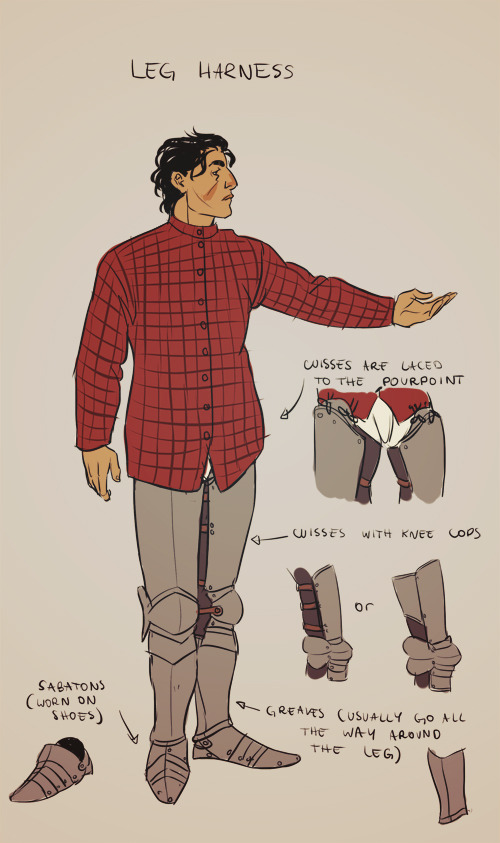
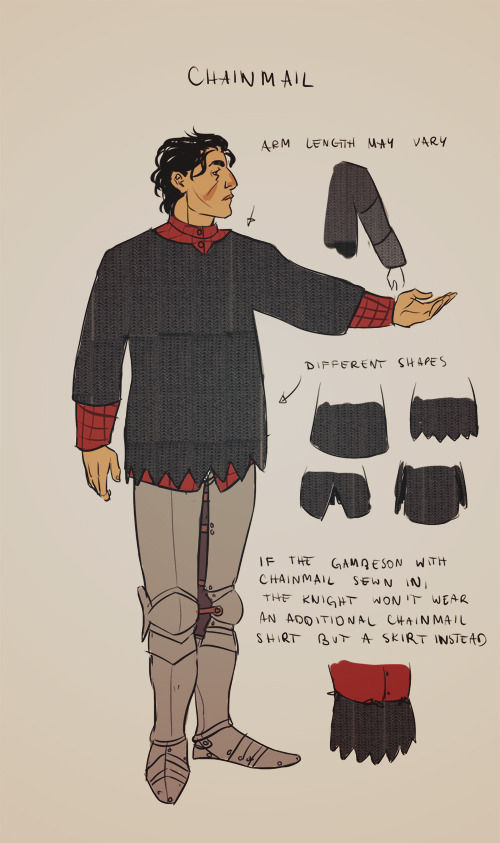
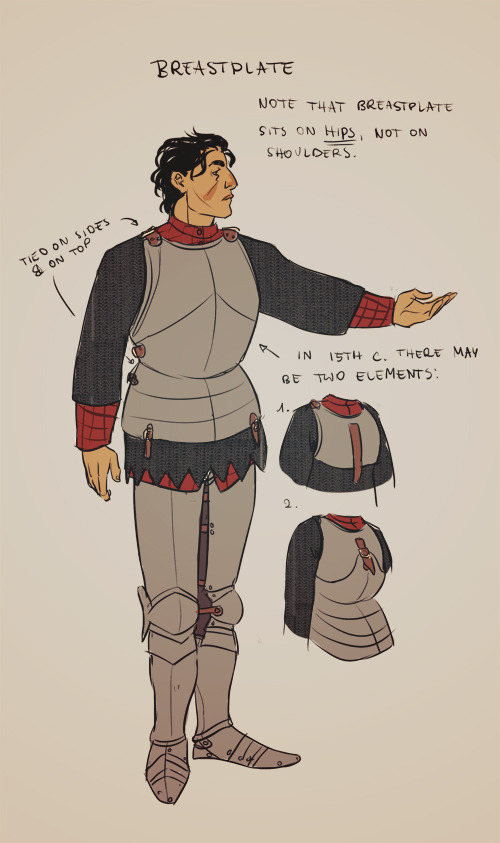
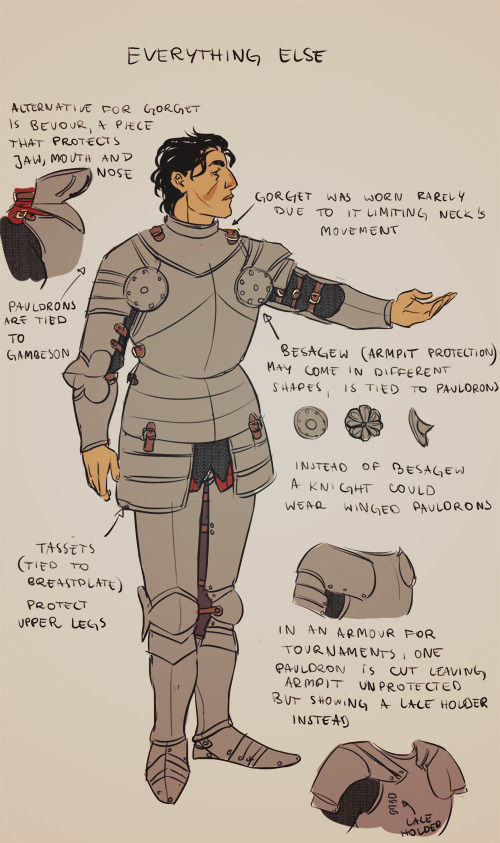
There’s always space for yet another armor tutorial, right? (ノ´ヮ´)ノ*:・゚✧
Note that the armor I drew would be worn around 15th century, the more into the future the less and less components knight’s armor had (i. e. in early 14th century instead of greaves a knight would wear long boots only; in 12th century knights didn’t wear plate breastplates and instead a chain mail only). Also the design of armor pattern changed by year and was different in every country (i.e. in eastern Europe armors, while still looking European, were heavily influenced by Turkey). so just make sure you always do research whenever drawing an armor. And one more thing to keep in mind is that armors were expensive, knights wearing a full plate armor weren’t an often sight.
Some links that may be useful:
Armour Archive (I strongly suggest to browse its forum, there is no country or period of which armor wouldn’t be discussed)
Therion Arms (armorer’s page; each accessory is photographed in big resolution and several time so it’s a nice page to use as reference for drawing)
Revival Clothing (another store, but both with medieval clothing and armors; I suggest to read the articles, they’re often supported with pictures)
Basic Armouring:A Practical Introduction to Armour Making (pdf)
Educational Charts (pdf, shows how armors and weapons changed over the years)
Medieval & Renaissance Material Culture (actual medieval resources, mostly paintings. And my favourite subpage - women in armor)
Dressing in Steel (youtube; a demonstration how to dress in armor)
How shall a man be armed? (youtube; another demonstration but with 4 different knights from different periods)
-
 imaginationcenter liked this · 1 year ago
imaginationcenter liked this · 1 year ago -
 fun-ishtimes liked this · 2 years ago
fun-ishtimes liked this · 2 years ago -
 sunnyqup reblogged this · 2 years ago
sunnyqup reblogged this · 2 years ago -
 chocokrispiss liked this · 3 years ago
chocokrispiss liked this · 3 years ago -
 elicent liked this · 5 years ago
elicent liked this · 5 years ago -
 sunshinesx33 liked this · 5 years ago
sunshinesx33 liked this · 5 years ago -
 feynren liked this · 6 years ago
feynren liked this · 6 years ago -
 bitsofreese reblogged this · 6 years ago
bitsofreese reblogged this · 6 years ago -
 bitsofreese liked this · 6 years ago
bitsofreese liked this · 6 years ago -
 numberoneobjectcrown liked this · 6 years ago
numberoneobjectcrown liked this · 6 years ago -
 gamasaaa liked this · 6 years ago
gamasaaa liked this · 6 years ago -
 ichunddu13 liked this · 6 years ago
ichunddu13 liked this · 6 years ago -
 aether1984 reblogged this · 7 years ago
aether1984 reblogged this · 7 years ago -
 a-seals-song reblogged this · 7 years ago
a-seals-song reblogged this · 7 years ago -
 seriuco liked this · 7 years ago
seriuco liked this · 7 years ago -
 shiftingoutofcontext reblogged this · 7 years ago
shiftingoutofcontext reblogged this · 7 years ago -
 firedragonx reblogged this · 7 years ago
firedragonx reblogged this · 7 years ago -
 rogue-crew-ask-blog liked this · 7 years ago
rogue-crew-ask-blog liked this · 7 years ago -
 artificial-puns liked this · 7 years ago
artificial-puns liked this · 7 years ago -
 littlesharknibble liked this · 7 years ago
littlesharknibble liked this · 7 years ago -
 grawlboy liked this · 7 years ago
grawlboy liked this · 7 years ago -
 anyadarkness liked this · 8 years ago
anyadarkness liked this · 8 years ago -
 fluffysaechero reblogged this · 8 years ago
fluffysaechero reblogged this · 8 years ago -
 shesellsseachells reblogged this · 8 years ago
shesellsseachells reblogged this · 8 years ago -
 memories-byme liked this · 8 years ago
memories-byme liked this · 8 years ago -
 cool-and-caustic liked this · 8 years ago
cool-and-caustic liked this · 8 years ago -
 dutchprintmaker reblogged this · 8 years ago
dutchprintmaker reblogged this · 8 years ago -
 t-ulip liked this · 8 years ago
t-ulip liked this · 8 years ago -
 miniguy5-blog liked this · 8 years ago
miniguy5-blog liked this · 8 years ago -
 miniguy5-blog reblogged this · 8 years ago
miniguy5-blog reblogged this · 8 years ago -
 majodump liked this · 8 years ago
majodump liked this · 8 years ago -
 spiffy-sea-dragon liked this · 8 years ago
spiffy-sea-dragon liked this · 8 years ago -
 zawao0 liked this · 8 years ago
zawao0 liked this · 8 years ago -
 turtlepated liked this · 8 years ago
turtlepated liked this · 8 years ago -
 prod1gyy liked this · 8 years ago
prod1gyy liked this · 8 years ago -
 leggu-my-eggu reblogged this · 8 years ago
leggu-my-eggu reblogged this · 8 years ago -
 gidgetlawliet liked this · 8 years ago
gidgetlawliet liked this · 8 years ago -
 ary-reblogs reblogged this · 8 years ago
ary-reblogs reblogged this · 8 years ago -
 yamaxanadu26 liked this · 8 years ago
yamaxanadu26 liked this · 8 years ago